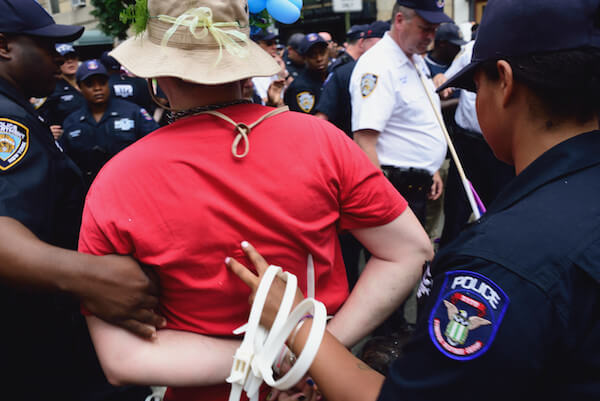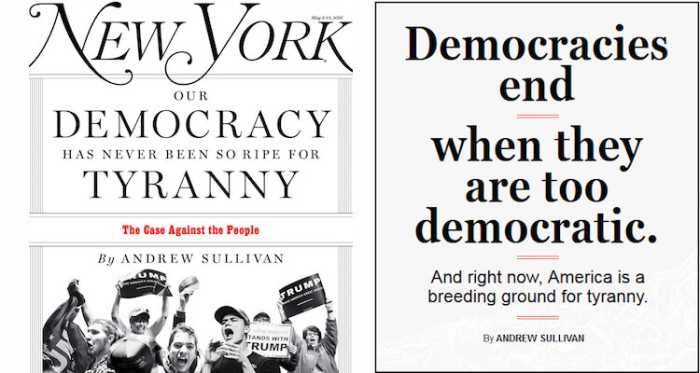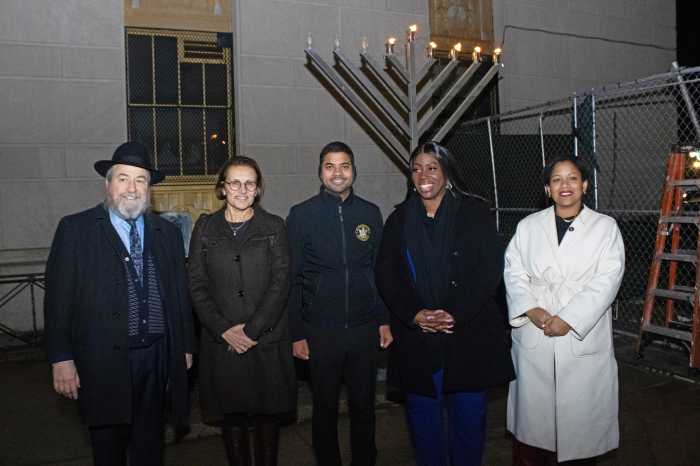Through contemporary performance and visual art curated from around the world, Queer New York International examines and broadens current notions of queer and the geographies that define it. This year’s fourth annual festival features US and New York premieres by artists from Bulgaria, Croatia, France/ Morocco, South Africa, Switzerland, and the US.
Events begin with an “ecosexual extravaganza” and film screening by San Francisco-based artists Annie Sprinkle and Beth Stephens.
Festival favorite Ivo Dimchev returns with two shows: “Facebook Theater,” an interactive theatrical experiment with actors performing a text that will be created by a Facebook audience in real-time and a performance of 15 songs from his other shows.
The fourth annual Queer New York International Arts Festival starts September 16
Africa has been added into the mix for 2015. In this year’s program introduction, festival curator Zvonimir Dobrović says a special block of programming will be dedicated to artists from different African countries in future fests.
Marya Wethers, who has curated US and African artist exchanges through the Suitcase Fund, was invited by Dbrovic to participate in the festival, specifically by programming African artists.
“The conversation,” she told Gay City News, “is to develop this into a residency that takes place prior to QNY, and also, to invite other artists to come and be here during the festival and show works-in-progress at different venues, with one or two headliners.”
Wethers added, “This year is a pilot. Next year, hopefully, we’ll start to do more.”
Wethers curated this year’s performance by South African artist Mmakgosi Kgabi, based on the artist’s activism. Gay City News interviewed Kgabi about her work, life, and perspective as a queer South African woman now living in Germany.
“When Black Lives Matter erupted in the States,” Kgabi said, “I was working with Stompie Selibe, a fine artist in South Africa. He interpreted my script into paintings and in the end I wrote on one of the paintings ‘Black Lives Matter, All Lives Matter, Black Lives Matter, All Lives Matter,’ repeatedly. South Africa was at that moment experiencing a burst of xenophobic attacks, so in our context this made sense to me. During the Apartheid era, the phrase Black Lives Matter was also apt.”
Despite guarantees enshrined in that country’s constitution, Kgabi said, “In South Africa there are certain parts of the country which have an air of unsafety for people of queer identity and for women. Government law and street law are at loggerheads. Traditionalists and vigilantes are constantly harassing and murdering people of queer orientation and it is not often that the perpetrators are brought to justice.”
The US and South Africa are “further down the line” than her original home Botswana, where homosexual acts are illegal. Only last year, the gay and lesbian group Legabibo won a landmark legal case in that country’s High Court, allowing it to be officially registered.
While the German government has only allowed for civil unions, Kgabi said that “socially living in Berlin is an explosion of openness on the queer spectrum. So my journey through Botswana, [to] South Africa, to Germany has felt like a personal liberation and I have let my guard down more along the way. I have walked toward myself and away from myself in a very necessary manner.”
“My work comes always from a personal spring board,” Kgabi added. “I work with the background of my clown training” and the clown works with tragedy and joy — and this is the state of our lives.”
“Circus arts are big in South Africa,” Wethers, told Gay City News. “Many artists find their way into contemporary performance from there.”
Kgabi’s “Shades of a Queen” (September 21, 8 p.m. at Abrons) is a coming-of-age, coming-to-self, coming-out piece exploring the identity constructs of an African queer child.
On another vector of the intersectional landscape is art world mischief-maker Mehdi-Georges Lahlou, who questions Arab and queer identities in disarming and absurd ways. Through his visual and performance art, he juxtaposes potent symbolic content with his own body, achieving a burlesque surrealism, through such acts as eating a banana while balancing a Koran on his head or jumping repeatedly in a pair of red high heels.
Lahlou was born in France and lives and works in Brussels and Paris. Having grown up French-Moroccan with one Muslim and one Christian parent, his daily experience was multicultural, a complex navigation through different terrains of otherness. In his performances and installations he challenges aesthetic and bodily signifiers of religious and cultural practices — both Arab-Muslim and Euro-Christian — juggling his identities with the skill of a wry, if ignorant jester, subverting and obverting simultaneously to provoke shock, discomfort, and some fundamental questions, but never insult.
“My work tries to raise questions about representation and perception,” Lahlou told Gay City News. “Indeed, in my practice –– performances, videos, installations –– I tend to put in doubt all the preconceptions of symbols, whether related to religious aesthetics, cultural identities, gender, or sexuality. In a balancing act, my work explores the boundaries of reality, belief, and history, suggesting an indirect reality.”
He added, “I question the prohibitions, fragile and ambiguous evidences. Because if you look at my work, you can realize that everything is wrong, nothing is really real. There are so many juxtapositions, that the resulting images do not exist.”
Lahlou doesn’t identify his work as queer –– that would be too restrictive, he said –– nor think of himself as an activist, “just an artist with a lot to tell.”
“Of course, because my work is mostly autobiographically based,” he explained, “I deal with problematic issues as said before, and most of all the place of the body, the place of the body of a man with his own stories. Stories separated but unified in one body. So the work must be done.”
When asked what his performance for the festival will be like, he replied, “There will be sport, there will be sweat, there will be food, humor, and sensuality, I hope, something charming.”
Lahlou will present his new work for the festival, “Stupidité contrôlée or jump jump baby jump jump,” September 25 at 7 p.m. at Merton D. Simpson Gallery. He will also have a solo exhibition at the gallery –– with new photographs, videos, and sculptures –– October 2 through November 14.
Among the handful of New York City artists performing is Max Steele, who will present his solo “The Good Daughter,” a world premiere cabaret performance featuring songs written by women about female identity.
Also on the festival line-up are these attention-grabbing titles: Joshua Monten’s “Doggy Style,” incorporating dance and sign language; John Moletress’ solo “Jarman (all this maddening beauty),” inspired by filmmaker Derek Jarman; and “Disclosures” from Croatian Bruno Isaković, who will work with performers from New York to present a piece all about nudity.
QUEER NEW YORK INTERNATIONAL ARTS FESTIVAL | Festival hub: Abrons Arts Center, 466 Grand St. at Pitt St. | Sep. 16−26 | Venues include Central Park; Dixon Place, 161A Chrystie St., btwn. Rivington & Delancey Sts. & Merton D. Simpson Gallery, 28 W. 28th St., suite 5 | queerny.org.





































